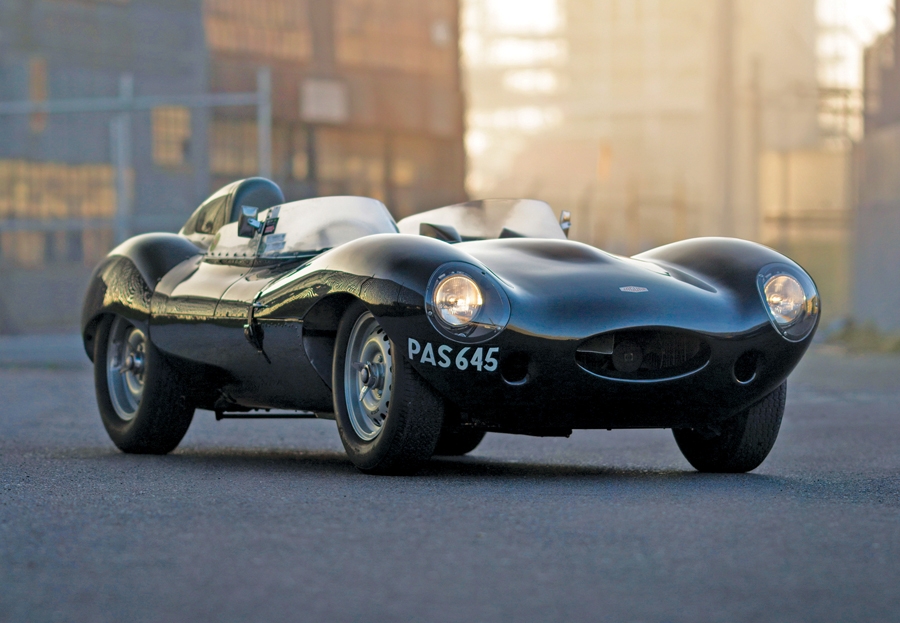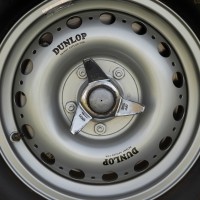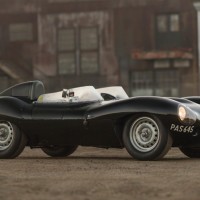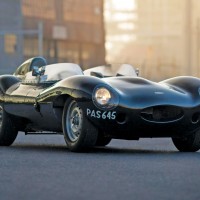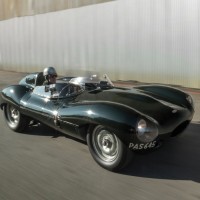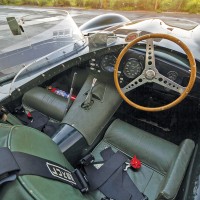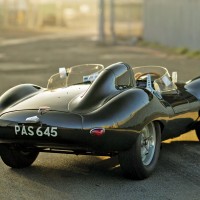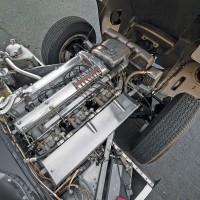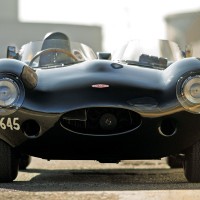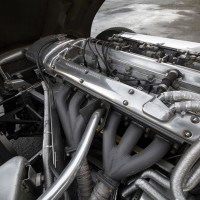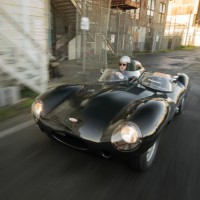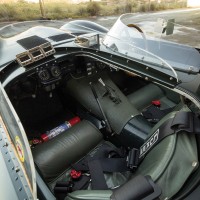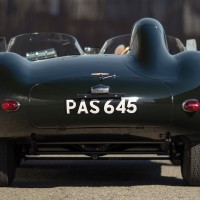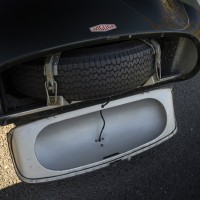SCM Analysis
Detailing
| Vehicle: | 1955 Jaguar D-Type |
| Years Produced: | 1954–56 |
| Number Produced: | 71 |
| Original List Price: | $11,000 |
| SCM Valuation: | $2,750,000–$4,250,000 |
| Chassis Number Location: | Top of left front suspension |
| Engine Number Location: | On head between cam covers and on right side of block above oil lines |
| Club Info: | Jaguar Club of North America |
| Website: | http://www.jcna.com |
| Alternatives: | 1954–55 Ferrari 750 Monza, 1955–58 Maserati 300S, 1953–56 Aston Martin DB3S |
| Investment Grade: | A |
This car, Lot 135, sold for $3,675,000, including buyer’s premium, at RM Sotheby’s Amelia Island auction on March 14, 2015.
I am going to open this discussion with the basic conundrum concerning this sale: The car sold for at least $500,000 less than the comparables say it should have — twice (for $3.9 million in 2013 and for $3.675 million this time). What’s going on here?
There are a number of parts to this story; let’s start with some background on Jaguar racing cars and particularly the D-type.
Although they weren’t averse to the idea, Jaguar did not start out thinking of themselves as a racing car operation. In fact, they had primarily been a builder of staid upmarket saloons.
Getting back into the auto business after World War II, Jaguar needed a new engine design and came up with a 6-cylinder, twin-cam approach — basically a knock-off of the late pre-war Alfa Romeo 6C 2500 engine that they called the XK. To publicize the new engine, they designed a very swoopy sporting show car that they called the XK 120 (for the engine and how fast they thought it would go). Everybody loved it, so they decided to build a run of 200 cars to help sort out the engine. Those sold like hotcakes, so production was expanded, and suddenly Jaguar was in the performance sports car business with one of the fastest sports cars in the world.
It was also a very profitable and export-oriented business, which Britain desperately needed in those days, so Jaguar decided to double down and push the performance and racing image. Jaguar hired many of the best aircraft engineers who had become available when the war effort ended, and they set them to creating serious racing cars. They started with the XK 120 C (competition), which shared little more than the engine, drivetrain, and general body configuration with the production version. This car became known as the Jaguar C-type. These were very successful racers in 1952 and 1953, but Jaguar wanted more, so they gave their engineers a clean sheet of paper and marching orders to create an entirely new (except for the engine) and extremely advanced racing car to be called the D-type.
A huge jump ahead
In its time, the D-type was an astonishing engineering tour de force.
It was designed and built far more like an airplane than a traditional car. The monocoque center chassis was a mystery to anyone who hadn’t built warplanes.
Torsional rigidity, centers of lift and pressure, and aerodynamic stability were carefully calculated. The rounded sides were not a styling statement; they were there both for strength and crosswind stability. Everything was tested and revised in a wind tunnel before the design was finalized. The suspension was conventional, but it used disc brakes and a power-assisted master cylinder that were adapted from airplanes and never seen before on a racing car. When the D-type was introduced in 1954, it was years ahead of anything anybody else could think about building.
And it worked very well, too, particularly in endurance racing. For years after the factory quit racing in 1956, it remained the best distance-racing car you could buy. The problem was that not enough people wanted to buy them, and the factory, having built 71 cars, ended up sitting on at least 20 cars that they couldn’t get rid of.
Jaguar’s solution was converting 18 D-types into the street racer XK-SS by adding a windscreen, windows and a roadster top — and interior niceties. The XK-SS cars eventually all sold and joined the ranks of exclusive Jaguars, although the general feeling about them in period was similar to the sailboat racer’s definition of a motor sailboat — not very good at either one.
For years, the XK-SS was considered in the enthusiast world to be the poor cousin of the fabulous D-type racer.
Racers, enthusiasts and investors
It’s time to spend a few moments considering the differences between racers, enthusiasts and investors (a collector can be any of the three or a combination).
As the name suggests, racers are defined by their need to compete, to have the experience of racing. Some care intensely about winning while others just love the excitement, adrenaline and the proximity to greatness that racing can offer. Generally, however, true racers are an unsentimental bunch: the cars are tools for the job, weapons for the battle. If a car is no longer competitive, make it faster; if it breaks, find the easiest way to fix it and get it back on the track. Originality and correctness are minor concerns if they are concerns at all.
Enthusiasts above all love their cars. They love the beauty, the driving experience, the mechanical complexity, the history, the provenance — everything about their cars. It’s a passion, an obsession sometimes, but as with true love, it is also sympathetic — every car isn’t perfect, particularly old racing cars that have been used, abused and put away wet in pursuit of glory. Enthusiasts can understand and accept — even treasure — the warts, dents, stories and imperfections that go along with heavily used racers.
Investors tend to be a very coldblooded bunch. They may love the cars, but they are mostly worried about the money they are investing being safe, and nothing kills value in any investor-grade collectible faster than known imperfections or stories. History can be a very important part of an investment-grade asset — but only if it didn’t hurt the car. In a weird way, in this category perfection is more important than history.
A fixed story is still a story
Let’s get back to Jaguars. One of the great problems with the D-type concept is that it incorporated a large number of separable but identifiable subcomponents: The monocoque tub stopped at the firewall and a tubular substructure carried the engine and the front suspension; the disc brakes (being aircraft sourced) carried serial numbers; so did the master cylinder, the engine, the tranny, etc…. In their days as weapons for unsentimental racers to use, many D-types got their components shuffled, which in turn has caused lots of heartburn for the investors.
Our subject car, XKD530, is a classic example of this problem. In its late “just-a-racer” days, it effectively became two cars, with its real bits scattered among reproduction and replica ones, and both cars claiming some right to be the original. Thus, the car has a huge “story” and became toxic to the investor class.
This car’s story was fixed, though: A great enthusiast bought both cars and hired Chris Keith Lucas of CKL Developments in the U.K. (the ultimate racing Jaguar guru) to take everything apart down to the bolts and reassemble one absolutely correct and original car. He did exactly that, and Chris now tells me that XKD530 is easily one of the ten best (most original and correct) D-type Jaguars in the world. Every important piece is original and documented, down to the brake calipers. I’m told that it is also a particularly good driver and a very quick example of the breed.
The car still has a story, though, and the world of collector automobiles has changed. Pure racers were priced out of the market decades ago, and wealthy enthusiasts can only watch as the investor collectors take over the nosebleed section of the market — where cars like this reside.
Investors hate risk: Purity and rarity are the touchstones of value for them. As evidence, consider the XK-SS. As mentioned, the XK-SS was what Jaguar did to get rid of some remaining D-types by turning them into sports cars. But with only 18 built they are exceedingly rare, and because they were street used, they didn’t get beat up. From poor cousin, the XK-SS rose to become the ultimate collector Jaguar.
One of the best D-types
So what about XKD530? As discussed, it is now one of the best D-types out there, but the story hasn’t gone away and maybe never will. So it depends who bought the car. To an investor, the price was probably fair. If the buyer was an enthusiast, it was very, very well bought. ♦
(Introductory description courtesy of RM Auctions.)
